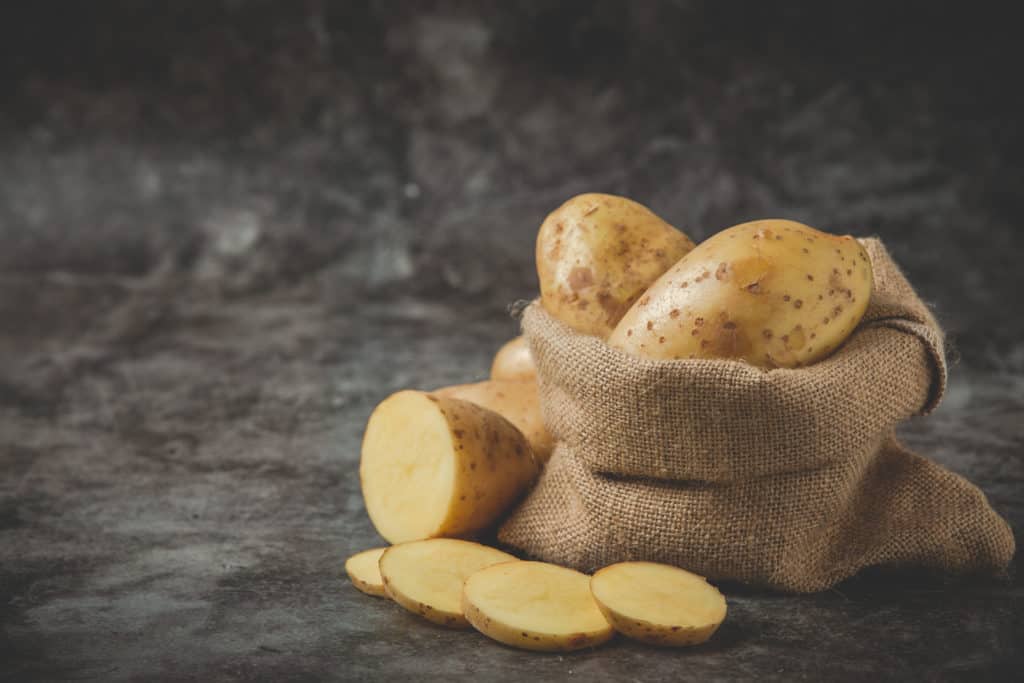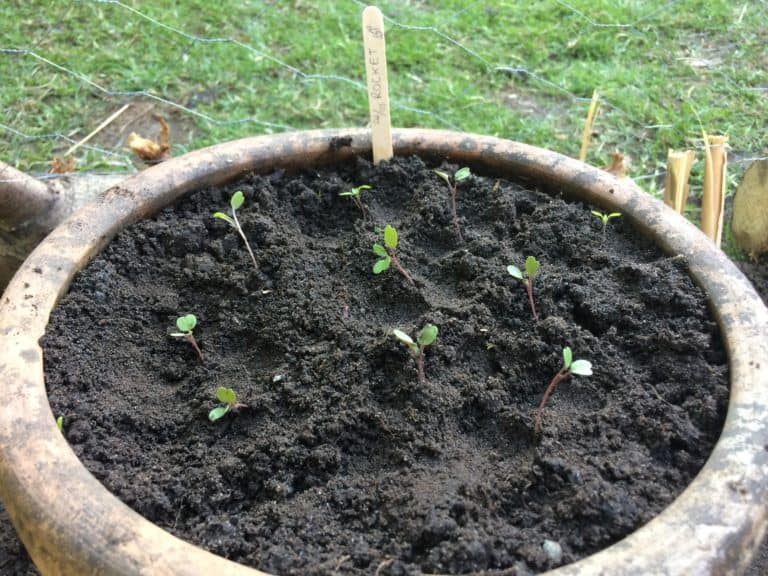During the summer months of Britain there’s nothing nicer than a crisp fresh salad to eat. Salad leaves, especially leaf varieties like rocket & spinach are sold in plastics. Whilst plastic is practical and it keeps your vegetables fresh, it is also harmful to humans and the environment.
Why plastic wrapping is bad for your health
Plastics bleed chemicals into your food slowly, the most common chemicals include bisphenol-A and phthalates.
Both cause negative responses in the human body. These chemicals and others have been known to cause health issues including tissue changes, hormonal changes, genetic damage and can cause cancer as well as fertility issues.
One way to help reduce your plastic waste & toxin intake is to grow your own salad leaves! There are plenty of species that can be grown and harvested as it develops. These are often called ‘cut and come again’ salads which we will cover later on.
How long does it take to grow leaf & head lettuces?
The average time to grow leaf salads to maturity is around 45-55 days. Most types of salad & leaf vegetable will be ready to harvest after this period. There are some leaf vegetables that you can harvest throughout their growth cycle.
These plants are often referred to as ‘cut and come again’ vegetables and cover more than leaf lettuces.
As the leaves grow and mature at different rates you can harvest the mature ones, leaving the younger to keep growing. This will also stop a leaf lettuce from bolting to seed for up to 2 months!
Once a lettuce leaf has bolted the leaves become tough and bitter.
- The average leaf salad will grow in 45-55 days
- The average head lettuce will take between 70-100 days to mature
By harvesting the older leaves you will stop the plant from maturing allowing for a repeated harvest. After around 2 months the plants will become restless and likely bolt or become unmanageable. It is just before this point you should harvest the hole plant to save wasting it.
Leaving the leaf lettuce to bolt and seed maybe desired if your wanting to grow some next year. Needless to say this is also a free source of seeds!
By planting several varieties you will make sure that you have fresh picked and tasty salad leaves throughout the season. Your home grown lettuces have also had no contact with plastic wrapping and have little to no carbon footprint!
Do salad leaves regrow?
This depends on the ‘type’ of salad leaf you are growing. There are 2 main types of lettuce which are known as ‘Head lettuce’ or ‘Leaf lettuce’;
- ‘Head Lettuce’ varieties should be left to grow to full maturity
- ‘Leaf Lettuce’ varieties can be picked as they grow
An example of a head lettuce would be something like an ‘iceberg lettuce’, a good example of a loose leaf lettuce or salad would be ‘rocket’ or ‘spinach’.
When to pick the leaves off or harvest a leaf lettuce
The best time to pick the leaves off leaf lettuces is when the they are tender but mature enough to take without causing lasting damage.
- Allow the plant to reach maturity
- Pick mature growth for salads and recipes
Once maturity has passed the less palatable the leaves will be. Some leaves however are best left to grow to produce energy for new growth.
When to harvest the whole leaf lettuce
There comes a time in any lettuces life cycle where it will want to bolt and go to seed. If you want to eat your lettuce while it tastes good, then it is best to harvest the whole plant before it bolts. This includes leaf lettuces as well as head lettuces.
- Harvest your leaf or head lettuces before they bolt & go to seed
When to harvest a ‘Head Lettuce’
Head lettuce grow differently to leaf lettuce and may die back if you attempt to harvest them while its growing. Allow head lettuces to reach peak maturity before harvesting. You should take the full plant & cut it where the stem meets the roots.
- Head lettuce are best harvested when they are at full maturity
- Harvesting leaves during its growth cycle may cause it to die back
Can I grow salad leaves indoors?
Yes, you can grow your leaf or head lettuces indoors! As long as there is enough light for the plants to grow properly then they will be OK inside.
In fact, germinating and nursing the seedlings indoors can be beneficial because it keeps the vulnerable seedlings from harm.
Humans are not the only animals who like salads and they can be prone to getting munched by a multitude of pests! To avoid this you need to make sure you protect your crops from pests and disease when they go outside. (Chickens are great pest control when managed correctly!)
Salads that ‘cut and come again’
One of the best ways to keep a steady supply of salad leaves throughout the growing season is to plant a mix of salads known as ‘cut and come again’ salads.
What does ‘cut and come again’ mean?
It is a general term used for a selection of salads known as ‘cut and come again’ due to the ability to harvest it whilst it is growing. The young leaves can be taken as they grow which also suppresses the plants ability to bolt and go to seed. This makes your leaf salad plant supply edible leaves for longer.
What salads are known as ‘cut and come again’
There’s a good range of leaf salads to choose from for your edible garden. By planting a selection of these in a relatively small area you can grow a large amount of salads quickly.
This is because:
- Salads tend to grow quickly
- They can be harvested as they grow, you don’t have to wait
Tasty leaves are not only produced by leaf or head lettuces. Some root vegetables and herbs also produce very tasty edible leaves that can used in salads or other recipes.
‘Cut and come again’ vegetables & salads
Here’s a list of vegetables whose leaves can be used in salads. They can also be cut and they will come back again. Meaning you can harvest the older leaves, leaving some younger ones to develop to pick another time.
Leafy vegetables
- Amaranth – earthly or nutty flavour
- Chard – earthy spinach that can be sweet
- Chicory/Endive – crisp and bitter flavour
- Leaf celery – a distinct flavour with hints of fennel
- Lettuces – dependant on variety
- Red kale – like kale only sweeter
- Radicchio – cultivated form of chicory
- Rocket – fresh and peppery flavour
- Sorrel – tangy and acidic with a sour flavour
- Spinach – very bitter flavour but tasty when prepared
Root vegetables
- Beetroot leaves – earthy flavour similar to chard
- Radish – radish leaves have a mild mustard & peppery flavour
Herb’s
- Basil – strong flavour associated with anise
- Coriander – warm lemon & citrus flavour
- Land cress – sharp taste similar to watercress
- Parsley – distinct but mild and citrus like flavour
Spices
- Mustard leaf – mild mustard flavour
Wild flower
- Dandelion – earthly nut like flavour similar to rocket and endive
Pea shoots also make great additions to salads and once cut will regrow if not cut too short.
All of these plants produce leaves that are edible and regrow. Each of the vegetables on this list can be considered a ‘Cut and come again’ salad.
By growing a variety of these leaf lettuce and root vegetables you can maintain a healthy diet of salads through the season. They will not only fill you up they will also give you the nutrients you need to keep fit and healthy.
How to harvest leaf lettuce so it keeps growing
You do not have to wait for a head to form with leaf lettuce, you can start taking leaves once they are around 6-12” in length. Taking younger leaves could damage the plants root system by pulling at it.
To avoid stress it is best to use some scissors to take the leaves of cleanly. You should try to cut the leaves at their thinnest point, close to the base. This is because the plant is still growing and doing so will leave less of a wound to heal.
You will get away with this harvesting method for around 2 months before they become untameable and will bolt.
Harvest in the morning or evening for a more crisp lettuce leaf, they are also sweeter harvested at these times. Harvested any other times than this will be a slightly more bitter taste.
How to harvest head lettuce so it keeps growing
Head lettuce do not respond well to being picked at during growth and are best left to develop into full maturity before harvest. This is because head lettuce need to develop their ‘heads’ before harvest.
Harvesting leaves before this development will hinder the growth and possible cause the plant to die back due to stress.
Did you know?

The mighty potato is a dietary must with a huge fiber content of up to 4g per potato (With the skin on)





